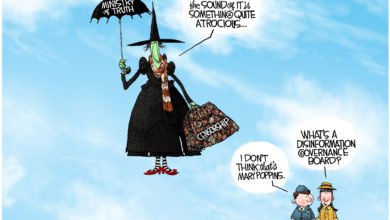Medal of Honor Monday: Marine Corps Col. James E. Swett
Not many fighter pilots can say they became an ace on their first combat mission. Marine Corps Col. James Elms Swett is one of the few who can. During World War II, he destroyed seven Japanese bombers in his first 15 minutes of combat, contributing to Allied success in the Solomon Islands and earning himself a Medal of Honor in the process.
Swett was born June 15, 1920, in Seattle; however, his parents, George and Nellie Swett, relocated to San Mateo, California, about three weeks later. Swett had two siblings, George and Margaret.
After Swett graduated from San Mateo High School, he attended San Mateo Junior College, where he took the flight training course twice under the Civilian Pilot Training program. Swett said he’d logged 450 hours by the time he decided to join the Coast Guard. When he went to a recruiter, however, he was persuaded to join the Navy instead, so on Aug. 26, 1941, he enlisted in the U.S. Naval Reserve as a Seaman 2nd class.
Swett said he was in the top 10% of his class throughout training, so two months after he joined up, he was appointed as a Marine Corps aviation cadet. After completing flight training, he was commissioned as a second lieutenant in the Marine Corps Reserve on April 1, 1942, just a few months after the U.S. entered World War II.
From there, Swett spent time in San Diego for fighter pilot training until December 1942, when he was sent to serve in the Pacific with Marine Fighting Squadron 221, Marine Aircraft Group 12, 1st Marine Air Wing. The unit was operating in the Solomon Islands area after the end of the Guadalcanal Campaign.
Swett arrived on Guadalcanal in February 1943. By early April, he’d taken part in a few patrols but had yet to fire his guns in combat. On the day that finally happened, Swett — then a 22-year-old first lieutenant — officially became a flying ace.
On April 7, 1943, Swett’s unit had already flown two missions when they were called into action against about 150 Japanese aircraft that were spotted heading for the U.S. naval fleet in Tulago, an island about 30 miles from Guadalcanal’s Henderson Airfield.
Swett and three other F4F Wildcat pilots took off to intercept a formation of 15 enemy bombers. Swett said in a 2003 Library of Congress Veterans History Project interview that the bombers were being escorted by numerous Zero fighter aircraft.
Ignoring flak from the American ships below him, Swett dove toward three of the bombers, taking them out with accurate and deadly fire. During that attack, Swett said an anti-aircraft shell put a hole in one of his aircraft’s wings, so he disengaged from the fight until he determined his aircraft was OK to continue.
“I was headed to getting away from the damned anti-aircraft when I found a whole bunch of [enemy] dive bombers trying to get together,” Swett said in his Library of Congress interview. “They were scattered all over the sky.”
Swett immediately jumped into action to attack the five enemy bombers. He said he flew below the enemy aircraft so their tail gunners couldn’t shoot him, then he would aim his plane’s nose up and let off short bursts from his machine gun to take them out.
“I would go to the next one and do the same thing,” he said.
Swett shot down four, then tried to close in on a fifth.
“Then I got over-confident,” Swett said of that attempt. “The rear gunner stuck his gun practically in my face and let me have it. [It] messed up my windshield. Sight glass and plastic were flying all over the place.”
He said he managed to kill the tail gunner before he ran out of ammunition. The enemy aircraft’s remaining gunners continued their assault, hitting Swett’s engine and partially disabling it.
Swett suffered injuries to his face, and he couldn’t see well because of spouting engine oil, but he kept firing at the bomber until the smoking aircraft disappeared into a cloud. According to Marine Corps records, U.S. soldiers later found the crashed enemy aircraft with its dead crew members inside. However, the aircraft was apparently never added to Swett’s tally.
After the enemy plane disappeared, Swett tried to make it back to Henderson Airfield, but his engine cut out over Tulagi’s harbor, so he had to ditch in the water.
“I knew that I was in deep trouble, so I just eased it down. … My flaps were inoperable. I just made a regular water landing, but the airplane hit and bounced and then dove for the water,” Swett remembered. “I went down, I don’t know, maybe 20 feet or something. I was struggling to get out of the damned thing and finally did. I popped my Mae West [inflatable life preserver] and came to the surface.”
The hard landing broke his nose. Thankfully, he was quickly rescued by a small boat of natives from a nearby island before he spent too much time in the shark-infested waters. Eventually, he was transferred to a hospital in Guadalcanal for treatment.
In his first combat flight, Swett was credited with destroying seven enemy bombers. About six months later, on Oct. 12, 1943, he received the Medal of Honor for his courageous actions. The medal was presented by Marine Corps Maj. Gen. Ralph J. Mitchell while his unit was on Espirito Santo Island in the New Hebrides island chain. Swett was the sixth Marine pilot to earn the nation’s highest award for valor for actions over Guadalcanal.
“It’s awesome — that’s the only way I can really explain it,” Swett later said of the responsibilities that come with being a Medal of Honor recipient. “We wear this medal basically for the veterans of all wars — for all services, for everything, particularly those who haven’t returned.”
At some point, Swett was promoted to captain. He continued to fly air support missions across the central Solomons through most of 1943, destroying several more enemy aircraft before the Japanese were forced to turn their attention toward other island chains.
During one battle over New Georgia Island, Swett was shot down again. This time, however, he spent four days in a rubber raft with only chocolate bars and coconuts for sustenance before he was rescued by locals in a canoe and taken to safety, according to an issue of the Marine Corps historical magazine Fortitudine.
Swett was sent back to the U.S. in December 1943. About a year later, his unit returned to the Pacific to serve on the aircraft carrier USS Bunker Hill, where he saw further action at Iwo Jima and Okinawa while flying F4U Corsairs.
By the end of the war, Swett had been credited with downing 15.5 enemy aircraft. Aside from the Medal of Honor, he’d also earned two Distinguished Flying Crosses, two Purple Hearts and four Air Medals.
Swett returned home to command Marine Fighting Squadron 141 at Naval Air Station Alameda, California, before being relieved of active duty in November 1945. He continued to serve in the Reserve until 1970, when he retired as a colonel.
Swett met and married his wife, Lois Anderson, around the time he left active duty. They had two boys, James Jr. and John, both of whom later became Marines.
Aside from his service in the Reserve, Swett worked at his father’s industrial machinery business, which he took over when his dad died in 1960 and continued to run until his own retirement. He then moved to Trinity Center, California, until his wife’s passing in the late 1990s. In 2007, Swett married Verna McPherson, who he met through mutual friends, and they settled in Redding, California.
During his retirement, Swett often spoke to school students and others about leadership and service to the country. He also survived more than just the war; according to his obituary in Redding’s Record Searchlight newspaper, he beat prostate cancer and lymphoma, and he survived three car crashes.
Swett died of congestive heart failure on Jan. 18, 2009, at a Redding medical center. He is buried at the Northern California Veterans Cemetery just southwest of Redding.
This article is part of a weekly series called “Medal of Honor Monday,” in which we highlight one of the more than 3,500 Medal of Honor recipients who have earned the U.S. military’s highest medal for valor.
Source: Department of Defense
Content created by Conservative Daily News is available for re-publication without charge under the Creative Commons license. Visit our syndication page for details.




